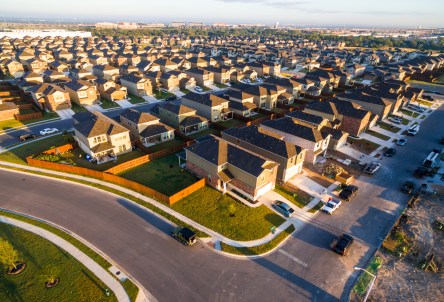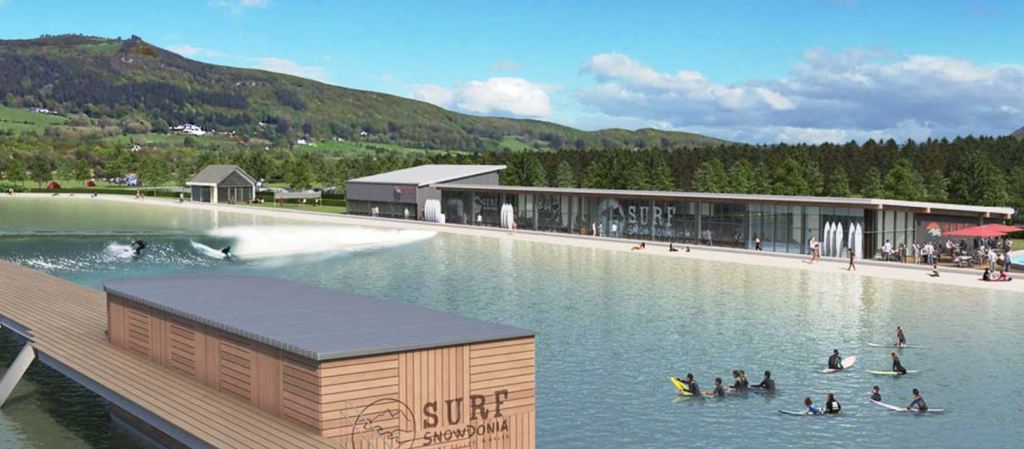In the wake of Hurricane Harvey, Congress has approved a $15.25 billion disaster aid package for the Federal Emergency Management Agency (FEMA). An additional package for Hurricane Irma recovery is likely under deliberation. The approved funds will contribute to, yet not cover, emergency assistance for regions of Texas and Louisiana overcome by Hurricane Harvey. The total funds needed for recovery may exceed $50 billion, according to analysts. The Gulf Coast of Texas received an unprecedented 50 inches of rain in less than four days. Homeland Security reports the loss of at least 70 lives and the destruction of more than 100,000 homes. Nearly 42 percent of Texans live in areas covered by the disaster proclamation. Beyond the Storm After Hurricane Allison, the 2014 City of Houston drainage study revealed that many of Houston’s poorest communities were inadequately prepared for “even modest storm events.” The National Community Reinvestment Coalition published a statement and map that shows the correlation between high-risk flood zones and communities of color. CNN reports that the city council approved $10 million to reduce drainage issues. Texas Housers and the Texas Organization Project claim that the City of Houston did not take action to protect its residents or mitigate the effects of Hurricane Harvey. Dam releases contributed to the devastation. On Monday, the US Army Corps of Engineers began to release water from the Addicks and Barker dams. The assumption was that the neighborhoods could better manage the water with controlled releases than uncontrolled overflow from the dams. Flood control officials in Harris County estimate that hundreds of properties flooded as a result of the controlled releases. Seeking Shelter Housing is the leading priority for disaster recovery specialists. Red Cross and partner associations opened 240 shelters in Texas and six shelters in Louisiana....
Helping After Harvey
Yardi commits $1 million to recovery, launches housing website
On August 25, 2017, Hurricane Harvey made landfall in southeast Texas. The devastating tropical storm dumped more than 50 inches of rain and killed more than 50 people during its four-day rampage. Due to flooding caused by the hurricane, more than 30,000 people were displaced from their homes in Texas and Louisiana. The evacuees staying in shelters or with friends and relatives included many renters. Yardi software helps manage a significant percentage of the Houston multifamily housing market. Yardi committed $1 million to support nonprofit organizations in the rebuilding of the areas affected by the hurricane, and will match employee donations to the hurricane relief fund. But there was also an opportunity to assist those in need of temporary or permanent housing due to floodwater damage. “The state of Texas is about to undergo one of the largest recovery-housing missions that the nation has ever seen,” FEMA Administrator Brock Long said at a news conference Monday. “It’s a long process. Housing is going to be very frustrating in Texas.” Following in the footsteps of an effort to create a housing clearinghouse for Canadians who lost their homes in the May 2016 Fort McMurray wildfire, our RentCafe development team sprang into action. Using the RentCafe property marketing and leasing platform, they quickly built a housing website that will help displaced residents find temporary and permanent homes. The website (RentCafe.com/HurricaneHarvey) allows housing providers to post available units and for displaced residents to search for housing. Housing providers can visit the site to list properties at no charge. “We had experience with this kind of rush site build from our work on a housing registry website for the fire victims in Canada last spring,” said Chris Ulep, vice president of multifamily development at Yardi. “A collaborative effort got the website ready in just a couple of days. We hope that hurricane evacuees will find it useful as they search for new homes.” Yardi has also launched a hotline that evacuees looking for housing can call for housing assistance. The toll-free number is (844) 363-6317. Additionally, Yardi is offering disaster response assistance for clients on the RENTCafé platform, including nudge messaging, voice messaging and call automation to help clients communicate with their residents during the aftermath. Yardi representatives are reaching out to clients in the affected area to explain and offer these and other services at no charge. “We have many valued clients in the affected area, and it is important to us to assist those clients as well as their residents who may have been displaced. Thousands of people have lost their housing due to this devastating natural disaster, and we want to help in any way we can,” said Anant Yardi, president and founder of Yardi. The efforts to help were appreciated by those in the affected area. “Our industry is committed to housing and providing needed services like online housing portals and other resources to assist those in need. We applaud the efforts of our supplier partners to assist those impacted by the hurricane,” said Chris Newton, executive vice president of the Texas Apartment Association. Additional resources for Yardi clients in the region include: The Texas Apartment Association has links to relevant documents and policies that may affect Houston property owners and managers. Policies for tax credit properties during federally declared disasters. An Emergency and Disaster Library from the National Apartment Association, with Hurricane Harvey content. For those who would like to help or support agencies working on the recovery effort in Texas, there are many ways to do so. A few resources include: Relief organizations assisting with evacuee support: Red Cross: donate online or by text REDCROSS to 90999 to give $10 to American Red Cross Disaster Relief. The United Way Salvation Army – Text STORM to 51555 GlobalGiving Hurricane Harvey Relief Fund Greater Houston Community Foundation – Hurricane Harvey Relief Fund The Way Home Portlight Charity Navigator compiled a...
Key to Fair Housing
Training for Property Staff
Shortly after the passing of Martin Luther King, Jr. in 1968, Congress expanded the Civil Rights Act to protect equal access to housing resources. Fair housing protection is a crowning achievement of the civil rights movement. Fair housing legislation makes it illegal to impede access to housing based on race, religion, national origin, sex, (and as later amended), handicap and family status. Nearly every state has expanded protection for residents beyond the national Civil Rights Act. State housing agencies and advocacy groups often test property managers and real estate agents for fair housing compliance. It’s unlawful for an agent steer a prospect to or away from a unit based on perception or opinion of prospective residents. Advertisements can’t target only one segment of the community or purposefully omit another community. Yardi eLearning streamlines access to role-based training resources for more than 44,000 active users. It replaces traditional classroom instruction with web-based, interactive courses and live webinar events. Users can access Yardi eLearning from any device with Internet access, including tablets and smartphones. Patty Evans, manager of the Yardi eLearning team, announced the addition of new fair housing curriculum to Yardi’s library of property management training courses. “Proper training makes leasing agents aware of fair housing concerns they may not even be conscious of – it’s not always easy for an agent to know when they may be treading into fair housing territory. That’s why fair housing training is so important for every real estate management company,” says Evans. Yardi eLearning fair housing courses and learning materials cover topics applicable to every state and residential real estate market, including the affordable housing and PHA industries. Yardi eLearning can also specialize content for states or cities. For example, the Texas Department of Housing and Community Affairs...
Making Waves
Man Made Surf Comes Austin's Way
Until recently, surfing has been an activity limited to the lucky ones with oceanfront access. This is about to change with some incredible technology created by Spanish engineering firm Wavegarden, which has the capability to deliver the longest man-made surfable waves on Earth. Sounds surreal, doesn’t it? Doug Coors, a descendent of the Coors Brewing family, made it his mission to put Austin, Texas on the surfer’s map by bringing the ocean-bound sport inland. The self-proclaimed engineer and surfer, founder and CEO of NLand Surf Park, LLC said it took him 15 years to find the proper technology to mimic an actual surf break. He found it in Spain and decided to bring it to North America. Coors plans to raise these waves for the public starting next year. Why Austin? Austin has become a powerful magnet for investors and tourists, a weekend heaven for festivals and activities of all kinds – from SXSW to triathlons for the disabled, biker rallies, and Eeyore’s Birthday Party. Sports lovers and creative entrepreneurs have made Austin their home partly due to the willingness to give new ventures a chance, no matter how ambitious they are. Probably the best example to sustain this perspective is the recently completed Circuit of The Americas Formula 1 track, the first in the country to be built specifically for F1 races. Interesting is that it is located down the road from the proposed NLand Surf Park site. The lagoon will be located east of Austin-Bergstrom International Airport on rural property as big as nine football fields. The complex will offer 11 different surfing areas, with four different surfing levels, designed to create every 60 seconds perfect waves ranging between one to six feet high, with a surfing experience of 35 seconds per wave; think 300 distinct waves per hour. The technology behind the massive lagoon has been created in collaboration with the team and tech at Wavegarden in Spain, who proved its capabilities through the thousands of waves it has pumped in the Basque Country wave park. One of the most intriguing and fascinating facts about NLand Surf Park is the claim that, after the initial fill, the park will be self-sustaining with rainwater, even during tough drought conditions. Imagine surfing on raindrops. “Our top priority is water and water conservation,” Coors told Think Progress. “The surf community is very environmentally conscientious and they pride themselves on environmental stewardship. We want to fit in with that as much as possible.” With the water consumption solved, energy use comes next. Water is heavy and moving it needs energy; the ocean has the sun and the wind to create the waves, how will this massive project be fueled? Even though Wavegarden’s CEO Josema Odriozola said that the energy consumption in the company’s technology is much lower compared with the other existing wave generation technologies, the matter is a hot subject. One solution would be to make the park use solar power by placing panels on the unused land; however, this part of the project has not been nailed down yet. Coors has been discussing with three solar providers to determine the possibilities. Austin-based White Construction Company was chosen to execute the project within eight months with approximately 90 construction craftsmen and professionals on site. The undertaking is privately funded. Backing for the project is provided by 9th Street Capital, a Colorado-based private equity firm where Coors is president. Opinions on the project are diverse, ranging from excitement to anger, but the project will happen. NLand Surf Park will be just like an indoor rock climbing gyms – perfect for training. Sounds like it will be a destination for all the surfers who have relocated in Austin, until they make it back to Mother Nature’s...
Master-Planned Communities
Livability, Walkability at Cypress Waters
With a burgeoning demand for sustainable living and mixed-use, walkable environments, the country’s master-planned communities are thriving. The top 20 master-planned communities sold 15,338 homes in 2013, which is an 11% increase over 2012, according to a report compiled by John Burns Real Estate Consulting. Texas dominated the ranking, with nine communities landing the list. Boasting a job-centric economy, the Dallas-Fort Worth Metroplex continues to be a big draw for both local and relocation home-buyers. The Metroplex has become an important target market for many new businesses as well as corporate expansions, which has generated massive job growth and a booming housing industry .The positive momentum is expected to continue all throughout 2014. The area will add 113,900 jobs this year, supporting a 3.6 percent increase in payrolls. In 2013, employers fostered the creation of 112,700 positions, as reported by Multi-Housing News Online. Despite the heightened construction activity, supply and demand will remain well-aligned in all sectors of real estate. Determined to capitalize on current demand, Billingsley Company has launched several mixed-use projects including Cypress Waters, a 1,000-acre master-planned community that straddles Dallas and Irving. Founded in 1978 by Lucy and Henry Billingsley, the Dallas-based real estate company specializes in master-planned developments and principles of new urbanism. Each Billingsley property offers a unique set of amenities, including smart design combined with artistic works and sustainable elements, which result into a life-enhancing experience for tenants, residents, visitors and employees alike. Fully committed to promoting environmental responsibility, the company uses energy-saving and sustainable materials to deliver both immediate and long-term value. Among a series of sustainable practices and innovative features aimed at enhancing the built environment, Billingsley’s green efforts include: integration of existing landscaping and low-water native plants into green spaces; installation of lighting retrofits, energy-saving faucets, automatic light sensor and energy-efficient HVAC systems; building homes with paperless sheetrock and environmentally-friendly paint and carpet products; achieving EnergyStar® certification for single-family developments; and recycling waste from construction sites. The company also developed the first Gold LEED® pre-certified building in Plano. Built around the same principles, Cypress Waters will eventually become an inclusive live-work-play environment offering as much as 4 million square feet of office space, 45,000 square feet of retail, more than 10,000 residences and three schools. The pedestrian-friendly development is centered around a serene 362-acre lake, which provides the perfect backdrop for a successful community promoting healthy lifestyles. It is located in the City of Dallas, in the Coppell Independent School District, offering a premier address and the best school system to its residents. Billingsley launched the community last year with the opening of The Neighborhoods of Cypress Waters, a 676-unit multifamily complex featuring one-, two-, and three-bedroom apartments and townhomes. Among the many perks, Cypress Waters features well-appointed interiors, two resort-style pools with free Wi-Fi, a state-of-the-art fitness center, a sand volleyball court, pet-friendly facilities, children’s playground, as well as an abundance of parks and green spaces. Work is currently underway on the office component of the mixed-use development, with a first building scheduled for completion in late May. Envisioned as a high-profile corporate campus, The Offices of Cypress Waters will boast environmentally sophisticated buildings, extensive natural landscaping, pedestrian trails and streets, freeway and lakeside restaurants. Billingsley Co. has already landed its first office tenant for the development. The single-story 31,450-square-foot structure currently going up on Ranch Trail and Interstate Highway 635 in Irving will serve as Cheddar’s Casual Café’s new corporate headquarters. “Our goal, along with Cheddar’s, was to create an office headquarters environment which would reflect Cheddar’s culture, values, and unique training environment,” commented Jim Montgomery, Senior Vice President & Principal of Swearingen Realty Group, LLC, who represented Cheddar’s Restaurants in the deal. “Delivering on this demanded that we evaluate all available existing and build-to-suit options to ultimately determine that the Cypress Waters site would bring the most value and was the best fit for Cheddar’s HQ.” A...





